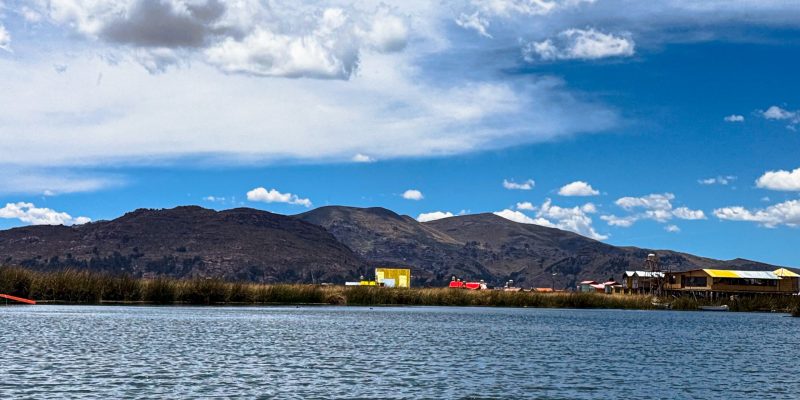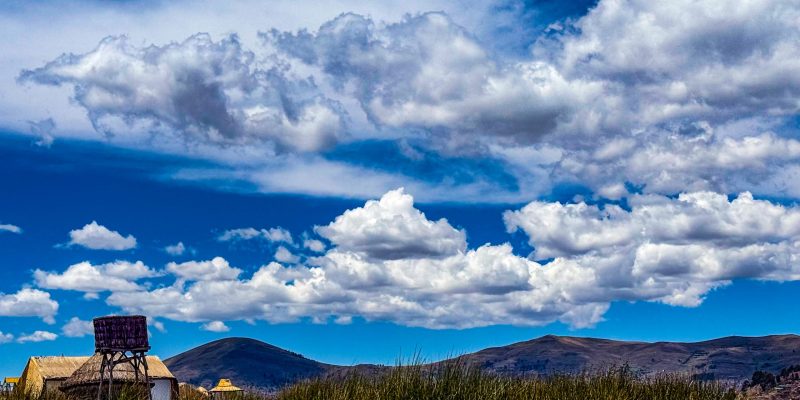Lake Titicaca: A Natural and Cultural Treasure in the Andes


Cultural Treasure in the Andes
Lake Titicaca, located in the Andean highlands between Peru and Bolivia, is much more than a body of water. It is a place where history, mythology, biodiversity and stunning landscapes come together. At 3,800 meters above sea level, this navigable lake, the highest in the world, has a unique relevance for both locals and visitors from around the world.
The Origin of Lake Titicaca
Millions of years ago, a geological event gave rise to the lake. The sinking of rock strata formed a tectonic depression that, over time, was filled with water from melting glaciers and constant rainfall. During its early years, the lake’s water level was 60 to 100 meters higher than today.
Mythological Significance
Lake Titicaca occupies a central place in Inca cosmogony. According to legend, the god Viracocha emerged from its waters to initiate creation. From here, he shaped the sun, the stars, and the first Inca rulers, founding a narrative that endures in Andean culture.
Climate and Features
With an average temperature of 13 °C, the waters of Titicaca remain cold all year round, ranging from 11 °C in winter to 15 °C in summer. The region experiences its lowest temperatures in July and its highest between December and March, reflecting a climate characteristic of the Andean highlands.
The lake has an area of approximately 8,500 square kilometers and reaches a maximum depth of 280 meters, making it the second largest lake in South America.
ROOM SERVICE
DAILY SANITATION
Flora and Fauna
The lake is a vibrant ecosystem with remarkable biodiversity. It is home to more than 350 species of waterfowl, such as ducks, parihuanas, and galatos. In its waters swim species of fish such as the carachi, trout and suche, many of them endemic.
Also noteworthy is the Titicaca giant frog, one of the largest amphibians in the world, and the Titicaca grebe, a bird that only lives in this region. The aquatic flora includes 12 different varieties, the most emblematic being the totora, used by local inhabitants to build boats, floating islands and tools.
In the areas near the lake, the terrestrial fauna includes animals such as foxes and guinea pigs, which adapt to the extreme climate of the highlands.
What to See and Do in Lake Titicaca
A visit to Lake Titicaca offers unforgettable experiences:
Floating Islands of the Uros: These artificial islands, built with layers of totora, are the home of the Uros, one of the oldest cultures in America. The Uros, who call themselves “men of water,” maintain ancestral traditions that you can learn about up close by visiting their communities.
Navigation and Connection with Nature
Sailing through its crystal-clear waters allows you to appreciate the immensity of the lake and its surrounding landscapes.
Taquile and Amantaní Islands: Known for their hospitality, these islands are ideal for living experiences of experiential tourism, learning about artisanal weaving and enjoying the tranquility of life in the highlands.
A Unique Destination
Lake Titicaca is not only a visual spectacle; it is a space of great historical, ecological and cultural importance. From its tectonic origin to its role in Inca mythology, through its unique biodiversity and its people, Titicaca continues to be a fascinating place that connects those who visit it with nature and the deep roots of the Andes.
Do you dare to discover the highest navigable lake in the world? Titicaca awaits you with its magic and infinite wealth.

Titicaca Lake is beatifull